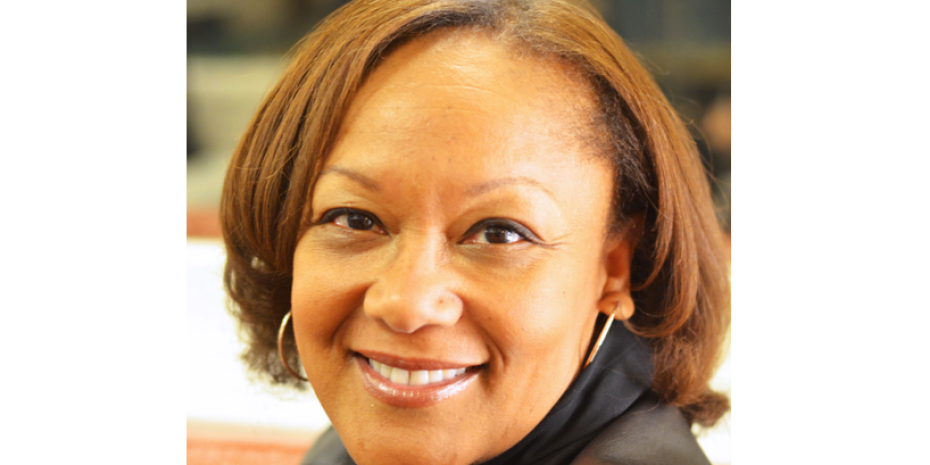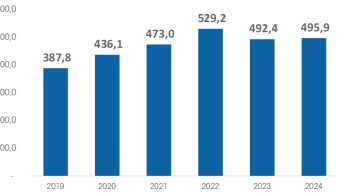The USA, a country of immigration, has a much more diverse population than most European countries. How do companies deal with the issues that are discussed there under the heading of “DEI – Diversity, Equity and Inclusion”?
We asked Sonya Ruff Jarvis, a management consultant working in the American home improvement industry, who begins by saying: “Everybody thinks, you add women to the C level team or the senior team and it’s diversity. But that's not the entirety of diversity. It’s much more complex” – among other things, “all kinds of different races, disabilities, gender identities, and pronouns now are big in the US”. This refers to the practice of indicating in correspondence, for example, which pronoun – he, she or, if the gender is not to be specified, they – one feels the most comfortable being addressed.
To describe the social context in which diversity is also discussed in the USA, she begins the conversation by recalling the Supreme Court’s ruling on “affirmative action” from June 2023. In this ruling, the judges declared easier access to elite universities for minorities to be unconstitutional. Donald Trump praised the judges’ ruling as a return to the merit principle, while Joe Biden declared his disagreement. Some in corporate America see this as an opportunity to abandon their DEI efforts.
Do American companies really live a philosophy of diversity?
Sony Ruff Jarvis: In some instances, yes, and in some instances, no. Even the companies with the best intentions can fall a little short, but the good news is at least they’re trying. Some companies are trying, some companies are doing it well. And some companies just don’t care.
And if they care, what do they do?
A lot of companies have developed DEI departments or at least have a C level officer that focuses on diversity, equity and inclusion. That is a good approach because it should never be treated separately. If you bring somebody in, it starts to integrate the DEI philosophy into the fabric of the organisation because there’s a lot of things that need to be done, from strategy development to implementing initiatives to making sure that you have the resources both, human resources and financial resources to really give the seriousness to that subject.
And why companies do that? What is their benefit?
For me, there are five arguments. One is: When you get different perspectives, you are able to be more creative, to solve problems better. Having more of a mosaic approach is always better than having a group of people that are all the same, all homogeneous. They just don’t think differently.
When you have people who think differently, it gives you those different perspectives that lead to the second point: innovation. You need approaches or products or services that really set you apart from the competition. Your customers see you as different when you offer them solutions that resonate with them; and, ultimately, that they can identify with.
The third point for me is financial gain. McKinsey did a survey and it found that in the US 25 per cent of companies that value diversity almost doubled their return on equity. You can even look at women heading up companies. These companies tend to be a more profitable than all white male companies.
My fourth point, is better reputation. These companies are seen as all inclusive. They don’t see race, religion, or gender identity as biases. They are involving different kinds of people to achieve the best company possible. You have a better reputation in the community, in the world but most importantly through your customers’ eyes they feel like they belong and/or can identify with your brand too.
Fifth: you have less staff turnover. If people feel valued, they feel like they’re included, they feel like they belong. It’s less likely that they are going to leave the company.
Asking you as a consultant, what was your advice for companies willing to get more diverse?
There is not a one shot advice for all types of situations. I work with companies all the time with DEI and it’s an ongoing process. It really takes 12 to 18 months to figure it out where you’re at; and, where you want to be. What you have to do is to understand the company. You have to get the CEO to be involved from ground zero – and not only involved because the board of directors is telling him to be involved. They have to believe that it will create a better workplace for their employees and will increase the stakeholders’ interest. It really will make a difference.
So we work on identifying what some of the issues are, making sure they have resources, putting together a strategy and then identifying throughout the organization who is going to help implement these strategies, who is going to execute the tactics that support the DEI strategies. It’s a long process and it’s hard. While the CEO might be supporting the DEI efforts and all the C level people might be supporting it, once you get to the second ring, it gets tough because they are the workers. And they say: But I also have a day job. How am I now supposed to do all this extra stuff? It really is a process because you are identifying that there are gaps. And then you are putting together policies for the company to stop those gaps, and then you are measuring it all along the way to see if it’s working and if it’s not, you have to correct the course. The company that I just finished up with, they were pretty diverse, but they want it to be even more diverse to reflect their clientele – and pronouns were a big inclusion benefit for their employees.
What are the major problems?
There can be a lot of tension between employees because now all of a sudden they have to do things differently. An example: even though your employee has said that they want to be referred to as they, the colleagues keep referring to the person as he or she. But I think the biggest thing I’ve seen is that employees think: Oh my god, there’s more work to do in addition to my own work if it’s not seen as an integrated part of the organisation.
You are a person of colour. Did you feel disadvantages then working in the home improvement retail industry?
I never felt disadvantaged, in my own personal situation. I am a highly educated woman of colour who is thankful for all the other women of colour that came before me. They made a way for me to be able to be present, to be heard and to be able to contribute. But I certainly have always looked around the boardroom and was/am aware that there were/are few people, if any, that look like me. Disadvantaged? No. But not feeling included or as if I belonged, yes.
What is your advice to European companies losing to become more diverse?
First, I think they have to really be honest with themselves right before they embark on this journey. I have had some situations where executives think it sounds good intellectually, like: we need to be more DEI, we need to be more diverse, we need to have more equity across the board, we need to be more inclusive. But when it really comes push to shove emotionally, to really do it, to really support it, that’s when it becomes hard. When you get push back from your employees, and you will, what will you do? Are you in it for the long run?
Second: You have to have your senior team behind the process. It can’t just be words, they have to walk the talk; believe it; not just go through the motions.
Third: I think you have to get help. You have find a consulting firm that will help you walk through the process because it is a process and you have to know where to start. You may think, for example, your employees feel one way and you survey them and then they feel a totally different way. You’re thinking you’re communicating with them. They may feel like they are not being communicated with, that they don’t know what’s going on. So you have to really get somebody that has an expertise in it. There are companies that hire a DEI expert on staff. But that person probably has their hands full with just trying to figure out policies, processes, procedures. But you really have to have somebody externally come in and be honest with the evaluation.
I think, fourthly, make sure you are measuring the results all along the way. In your course correcting it is really making a difference? What does that difference look like? It’s about how you will interpret the results, too.
And then finally, just to be sustainable, I mean DEI has to be interwoven into the fabric of the organisation. It can’t be a silo. It has to be part of the company, a real part. And it’s hard because people do push back when you start implementing some of these policies and procedures and processes. You will see biases begin to rise within the organisation. Integrating a DEI approach into your organisation is well worth the benefits and your company will yield positive results. But keep in mind it’s a long and hard process.
Sonya Ruff Jarvis
provides marketing and business consulting services in strategic development, DEI, marketing and promotion, event management, and executive coaching for small to mid-size enterprises. She brings more than 30 years of business experience having served in executive roles responsible for designing, launching and managing complex projects across diverse global industries. She has spent most of her career in the retail, hardware, home improvement and lumber and building materials industries.

 Menü
Menü















 Newsletter
Newsletter